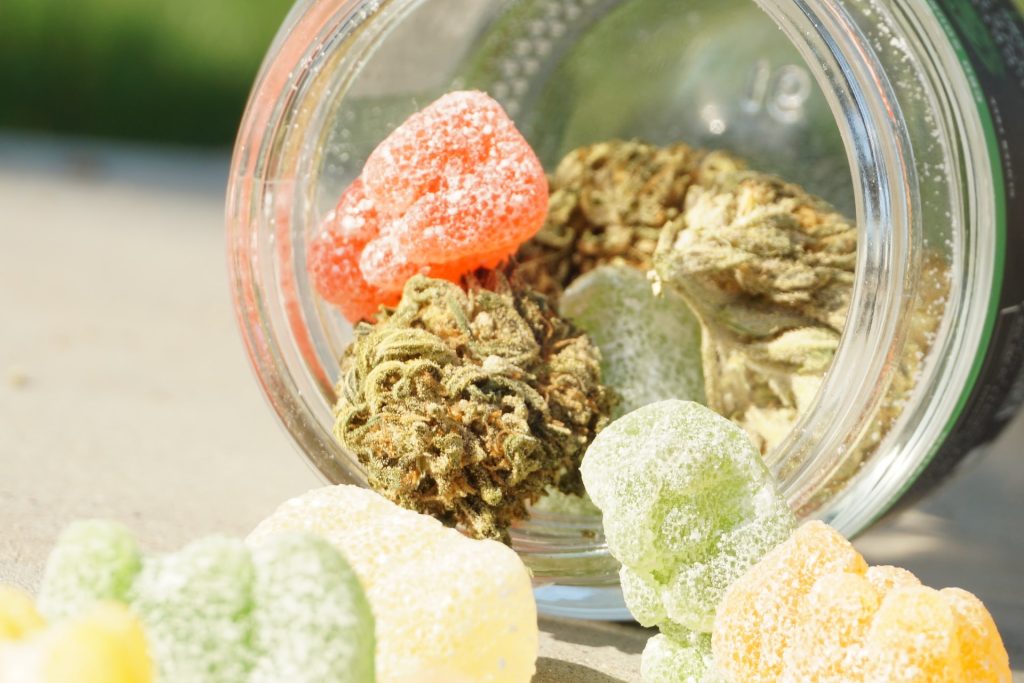Accidental cannabis consumption by children mistaking edibles, like brownies and cannabis-infused candy, for innocuous treats has increased in recent years, according to a new study. The study, published in the journal Pediatrics, found that in 2017, just over 200 cases of accidental consumption by children under six were reported. In 2021, that number increased to 3,054, a 1,375% increase.
Keep Out of Reach of Children: Accidental Cannabis Consumption Increasing


Accidental cannabis consumption by children mistaking edibles, like brownies and cannabis-infused candy, for innocuous treats has increased in recent years, according to a new study. This increase has happened in parallel with the growth in the number of U.S. states legalizing cannabis, which has more than doubled in the past five years.
Accidental Cannabis Consumption has Increased by 1375% Since 2017
The study, published in the journal Pediatrics, found that in 2017, just over 200 cases of accidental cannabis consumption by children under six were reported. In 2021, that number increased to 3,054, a 1,375% increase.
A total of 7,043 exposures to ingestible cannabis were reported to the poison center between 2017 and 2021 in children under six years of age.
“These exposures can cause significant toxicity and are responsible for an increasing number of hospitalizations,” the authors wrote.
The Primary Site of Ingestion Is the Home
The vast majority of children found these edibles in their own homes. While most children suffered mild impacts, 22.7 percent of exposed children required hospitalization, and 8 percent of them – 573 children over the five-year study – needed critical care.
Marit Tweet, an emergency physician at SIU Medicine in Springfield, Illinois, is the accidental cannabis consumption study’s lead author. Tweet’s curiosity about the topic was piqued in 2019 when she began a fellowship at the Illinois Poison Control Center.
“The big buzz at the time was that cannabis was going to be legalized for recreational use, for adults, on January 1, 2020” in Illinois, she says.
Earlier Accidental Cannabis Consumption Study Prompted New Study
Another study on accidental cannabis consumption in Colorado found that the number of children aged ten years and younger accidentally exposed to cannabis products increased between 2009 and 2015.
So Tweet wanted to know if this accidental cannabis consumption trend would also happen nationwide as other states legalize cannabis. She was especially concerned about children five and under, an age that is particularly vulnerable to accidental intoxication.
“This age group accounts for about 40 percent of all calls received by poison control centers nationwide,” Tweet says.
Authors Offer Explanations for Increase in Accidental Cannabis Consumption
The authors offered several possible explanations for the increase in cases, including time spent at home during the early months of the Covid-19 pandemic, when schools and daycare centers were closed, and the greater availability of legal cannabis products over the past decade.
They also note that many cannabis edibles are “offered in brightly colored and attractive packaging, identical to the marketing style of candy and snacks,” which contributes to their appeal to young children.
Packaging and Education
Tweet and colleagues analyzed information from the National Poison Data System based on calls received by the 55 regional poison control centers serving the United States and its territories.
According to Nora Volkow, who directs the National Institute on Drug Abuse (NIDA), the study ultimately calls attention to how edibles are packaged and marketed.
“If you’ve ever been curious, go to a dispensary or a store that sells cannabis products, which of course I, being a curious person, have done,” Volkow says. “And the edibles are extremely attractive in terms of packaging.”
She adds that parents and caregivers should have edibles in childproof containers and out of reach of children to prevent accidental cannabis consumption.
“It is important for providers to be aware of this in their practice, and it represents an important opportunity for education and prevention,” the study concludes.
—
(Featured image by Elsa Olofsson via Unsplash)
DISCLAIMER: This article was written by a third-party contributor and does not reflect the opinion of Hemp.im, its management, staff, or its associates. Please review our disclaimer for more information.
This article may include forward-looking statements. These forward-looking statements generally are identified by the words “believe,” “project,” “estimate,” “become,” “plan,” “will,” and similar expressions. These forward-looking statements involve known and unknown risks as well as uncertainties, including those discussed in the following cautionary statements and elsewhere in this article and on this site. Although the company may believe that its expectations are based on reasonable assumptions, the actual results that the company may achieve may differ materially from any forward-looking statements, which reflect the opinions of the management of the company only as of the date hereof. Additionally, please make sure to read these important disclosures.
First published in Newsweed, a third-party contributor translated and adapted the article from the original. In case of discrepancy, the original will prevail.
Although we made reasonable efforts to provide accurate translations, some parts may be incorrect. Hemp.im assumes no responsibility for errors, omissions or ambiguities in the translations provided on this website. Any person or entity relying on translated content does so at their own risk. Hemp.im is not responsible for losses caused by such reliance on the accuracy or reliability of translated information. If you wish to report an error or inaccuracy in the translation, we encourage you to contact us.



Comments are closed for this post.